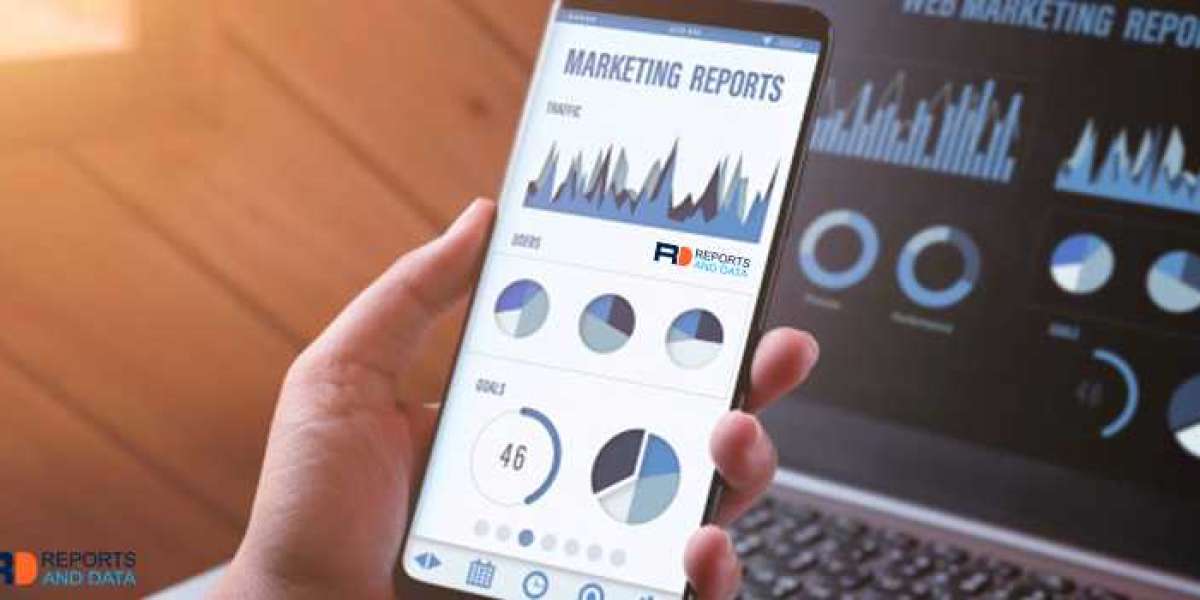The global Healthcare Payer Analytics Market, valued at USD 4 Billion in 2022, is projected to reach USD 23.7 Billion by 2032, exhibiting a rapid revenue CAGR of 21.9% throughout the forecast period. The significant growth in market revenue can be attributed to several key factors. One of the primary drivers is the increasing demand for cost control and effective management of healthcare services. As the healthcare industry becomes more intricate, there is a greater need for efficient data management to facilitate informed decision-making.
Moreover, there is a rising need for accurate and speedy analysis of medical data, which has led to the adoption of healthcare payer analytics. By leveraging analytics, healthcare payers can identify trends and patterns in medical data, understand patient behavior, and subsequently enhance the quality of healthcare services. The shift towards value-based care, which focuses on improving patient outcomes while reducing costs, is also fueling the demand for healthcare payer analytics solutions.
Get a sample of the report @ https://www.reportsanddata.com/download-free-sample/6367
Major Companies and Competitive Landscape:
Some major companies included in the global healthcare payer analytics market report are:
- Optum, Inc.
- Cerner Corporation
- IBM Corporation
- Aetna, Inc.
- Allscripts Healthcare Solutions, Inc.
- Conduent, Inc.
- Cognizant Technology Solutions Corporation
- Accenture plc
- Change Healthcare, Inc.
- Oracle Corporation
- UnitedHealth Group
To know more about the report @ https://www.reportsanddata.com/report-detail/healthcare-payer-analytics-market
Driving Factors of Healthcare Payer Analytics Market:
- Increasing Need for Cost Control and Effective Management: Healthcare payers face significant pressure to lower costs while maintaining high-quality healthcare services. Payer analytics solutions enable them to identify cost-saving opportunities, optimize resource allocation, and streamline administrative processes.
- Growing Demand for Accurate and Fast Data Analysis: With the complexity and volume of medical data increasing, there is a rising demand for advanced analytics tools that can quickly process and analyze vast amounts of data. Payer analytics help in spotting trends, patterns, and anomalies in healthcare data, leading to better decision-making and improved patient outcomes.
- Shift towards Value-Based Care: The healthcare industry is increasingly transitioning from fee-for-service models to value-based care, which emphasizes delivering better patient outcomes. Payer analytics play a crucial role in supporting value-based care initiatives by measuring performance, monitoring patient health, and aligning incentives for improved healthcare delivery.
- Rising Use of Big Data Analytics, Cloud-Based Solutions, and AI: The integration of Big Data analytics, cloud-based platforms, and AI technology provides more robust and scalable solutions for payer analytics. These technologies offer enhanced data storage, processing capabilities, and predictive insights, driving the adoption of payer analytics solutions.
Restraints of Healthcare Payer Analytics Market:
- Data Privacy and Security Concerns: Healthcare data contains sensitive patient information, making data privacy and security crucial concerns for payer analytics adoption. Compliance with strict data protection regulations can be challenging and may slow down the implementation of analytics solutions.
- High Implementation Costs: Integrating and deploying payer analytics solutions can be expensive, especially for smaller healthcare organizations or those with limited budgets. The initial investment and ongoing maintenance costs may deter some payers from adopting analytics solutions.
- Data Interoperability Challenges: Healthcare data is often stored in disparate systems and formats, leading to data interoperability challenges. Integrating data from multiple sources and ensuring seamless communication between different systems can be complex and time-consuming.
- Resistance to Change: Healthcare organizations, particularly larger ones, may face internal resistance to adopting new analytics technologies. Implementing analytics-driven decision-making processes may require a cultural shift and change management efforts.
Request a customization of the report @ https://www.reportsanddata.com/request-customization-form/6367
About Us:
Reports and Data is a market research and consulting company that provides syndicated research reports, customized research reports, and consulting services. Our solutions purely focus on your purpose to locate, target and analyze consumer behavior shifts across demographics, across industries and help client’s make a smarter business decision. We offer market intelligence studies ensuring relevant and fact-based research across a multiple industries including Healthcare, Technology, Chemicals, Power and Energy. We consistently update our research offerings to ensure our clients are aware about the latest trends existent in the market.
Contact Us:
John W
(Head of Business Development)
Reports and Data | Web: www.reportsanddata.com
Direct Line: +1-212-710-1370a
E-mail: [email protected]
Blogs | Press Release | Industry News | Our competencies
Browse More Upcoming Reports @ https://www.reportsanddata.com/upcoming-reports
Browse More Latest Reports @ https://www.reportsanddata.com/report








